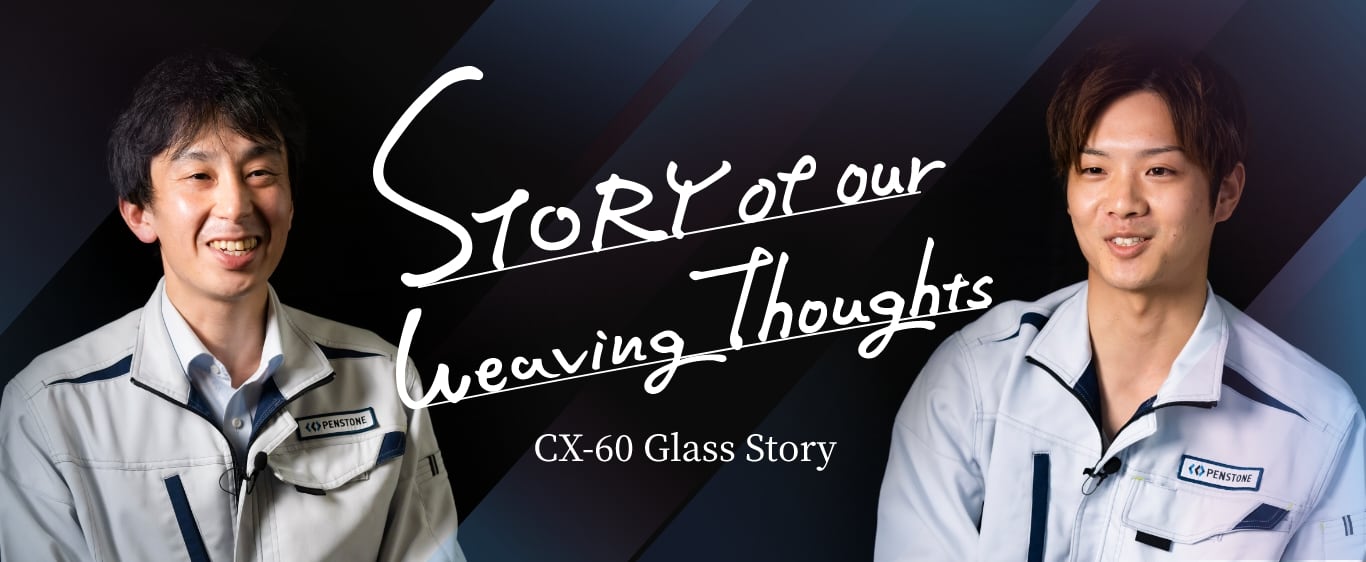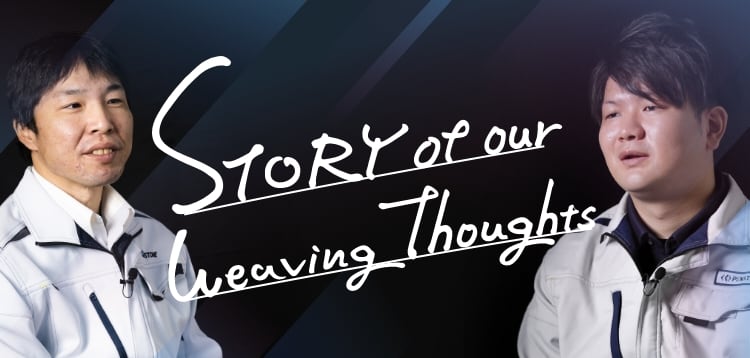Making Next-Generation Automobile Glass
with Uncompromising Efficiency Improvements
The Car Industry is Now Welcoming a Once in a Century Period of Massive Change──
This project began during this whirlwind of change. Relevant people from all departments gathered and held a meeting to exchange their views, and one of the topics they discussed was the CX-60, which Mazda introduced to the market with high hopes. Mr. Toyota of the Research and Development Department, which designs automobile glass products, was asked to improve manufacturing process efficiency. Around the same time, Mr. Kurihara of the Glass Assembly Section faced the same issues with establishing high quality manufacturing processes. Through their perspectives, we uncover the secrets behind the development of the glass parts for the CX-60.

Outline
| Contents | Development of CX-60 Glass Parts |
|---|---|
| Period | 2 Years |
| Number of Employees on the Project |
Over 30 People |
| Requirements | Implementing Improved Efficiency for Manufacturing Processes and Managing High Quality Manufacturing Processes |
Devising the Resin Form and Eliminating Defects
Designing glass for automobiles involves a wide range of tasks. As head designer, Mr. Toyota also served as an intermediary between the clients and the plants. He said that he consulted with on-site staff as well as suppliers and worked hard on the design from various perspectives. “For this project, I’m involved in designing the resin components that adhere to the glass. Before we needed a special jig for adhesion, but we optimized the resin component’s form itself. Since it can be directly attached now, the jig is no longer necessary.” This idea can be used as new knowledge for product manufacturing and can be applied to car models that come after the CX-60. “We were happy to be able to solve the issue within our own field of design. For me, it’s incredibly rewarding to be able to manufacture products with a high degree of precision.”


Automation of Manufacturing Line Eradicates Issues in the Process
Mr. Kurihara is in charge of the process settings for, and management of, stable mass production of products improved through design. For this project, he poured his energy into automating the manufacturing process. “We installed equipment for stabilizing quality, and set them to automate a series of processes, including transporting components, applying adhesives, and adhering to glass. We spent quite a lot of time creating this equipment, but by utilizing the knowledge we’ve cultivated and by relying on the strength of various people, we were able to install this equipment without any major issues.” It was the first time they tried to automate all operations, but they were able to eliminate issues in the process and unify quality. “When we move to full-blown mass production, the plant staff operate the equipment. So the interface is set up to be easy for the workers to use – from simplifying the operations, to the screen display and voice guidance.”


Creation of a New Manufacturing Process


Both of Mr. Toyota and Mr. Kurihara, belonging to different departments, said in unison that opinions of on-site staff became big help. “By getting advice from on-site staff during the design stage, we were able to create a wonderful design that is just as good as past car models. Car models planned after the CX-60 will start with opinion exchange sessions between all departments. This was certainly a turning point for product development in our company.” In response to Mr. Toyota’s statement, Mr. Kurihara said “This project was made possible thanks to the cooperation of our colleagues, including on-site staff and our senior staff. We were able to improve our product manufacturing by working together with various people.” These manufacturing professionals, by exchanging their opinions and facing their products without compromise, were able to complete automobile glass that was worth of the CX-60, a car model that will be a force for the new generation.

